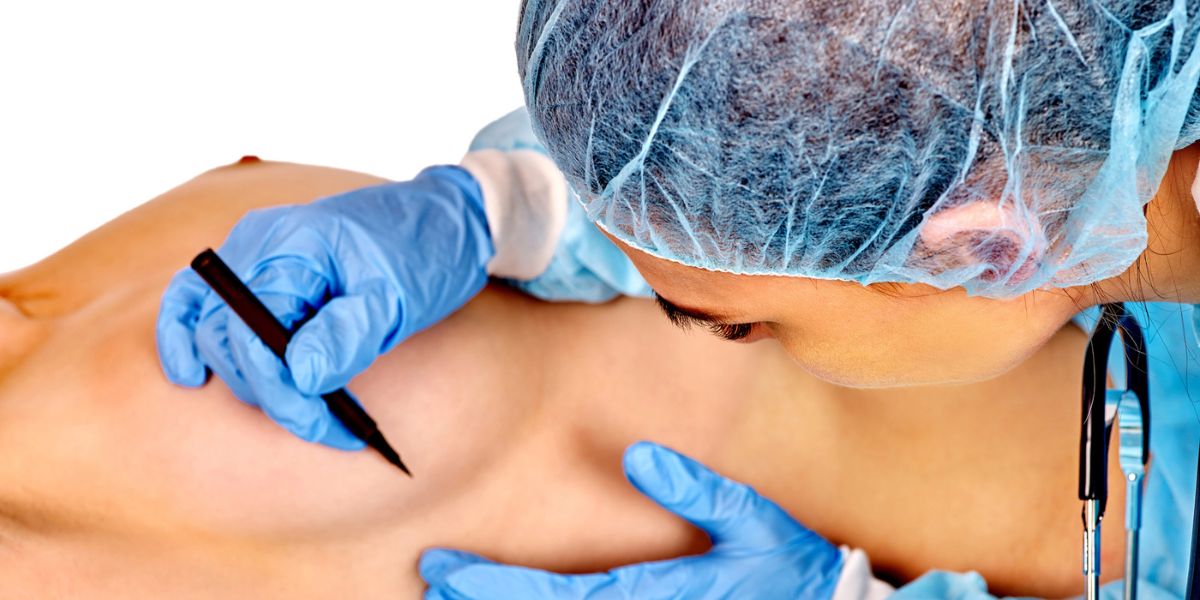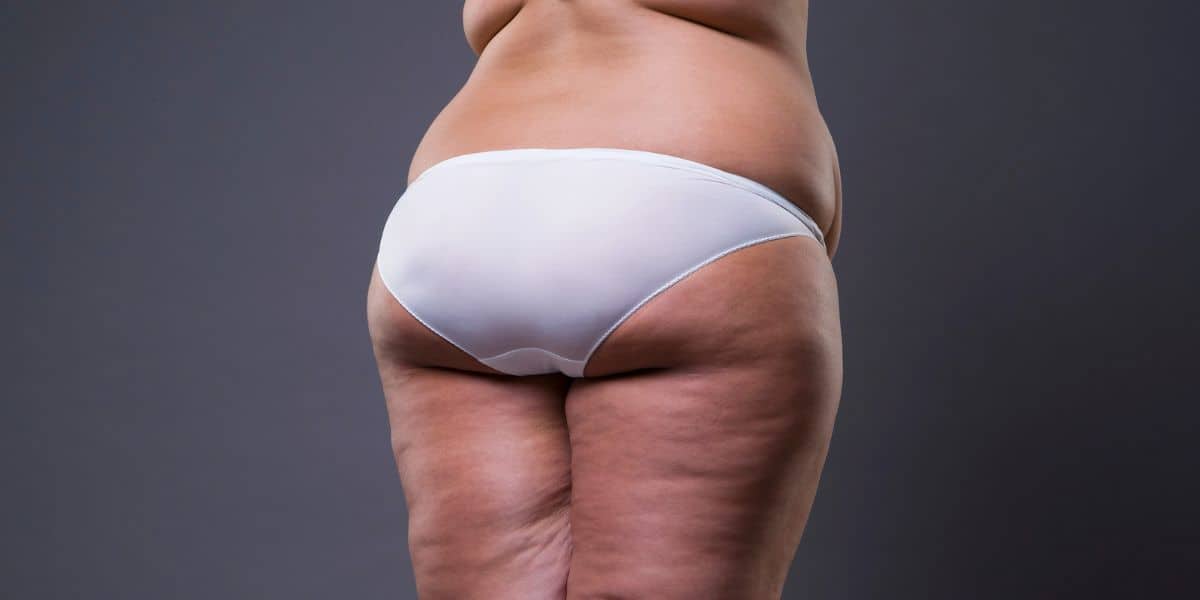Labiaplasty
What is the purpose of a labiaplasty?
There are few things worse than being self-conscious about your own body. Labia size and shape are as individual as eye color, and with a wide range of what’s considered “normal.”
However, if your labia minora is disproportionately longer than your labia majora, it can cause not only mental distress but also physical discomfort. If you’re experiencing irritation from clothing, discomfort during physical activities, painful sexual intercourse, or have cosmetic concerns in tight-fitting clothing or during intimacy, you may want to consider labiaplasty.
For some women, excess labial tissue can make everyday hygiene more challenging than it should be. When the labia minora are enlarged, it may be harder to keep the area clean, sometimes increasing the risk of irritation or minor infections, especially after exercise or during your menstrual cycle. By reducing extra tissue, labiaplasty can help make personal care and cleanliness more straightforward and comfortable.
Labiaplasty, otherwise known as labia reduction surgery or vaginal rejuvenation, is a procedure that involves trimming the labia minora, i.e., the “inner lips” of the vulva, for either medical or cosmetic reasons. This is often performed in conjunction with a clitoral hood reduction, which helps achieve a balanced appearance of the vaginal area.
Who’s a good candidate for labiaplasty surgery?
This is one of the most important questions I have to answer. During your consultation, I will evaluate your goals and potential outcomes and let you know if I think labia reduction surgery is right for you. I will always be 100% honest and let you know if I don’t think the procedure will truly benefit you.
Some patients would like to have the size of the labia majora reduced by removing fat and contouring the outer lips. Other patients benefit from fat grafting to the vaginal area to restore age-related or weight-loss-related volume loss.
Patients seeking to rejuvenate their labia after childbirth or other trauma, intersex patients, patients with congenital conditions, and trans patients benefit from labiaplasty as well. In fact, a 2008 study reported that only 37% of patients undergoing labiaplasty did so for solely aesthetic reasons.
In general, the ideal candidates are:
- generally healthy
- non-smokers (or willing to quit)
- realistic in their goals
If your labia are asymmetric, have changed dramatically after pregnancy, menopause, or aging, or cause you serious discomfort or pain, you may be a candidate for labiaplasty.
Childbirth can stretch or impact the labia, so some patients benefit from waiting…
How is labia plastic surgery performed?

The first step of any plastic surgery is a consultation with me. During this meeting, you’ll get to know me and my staff and we’ll go over your medical history and goals. The exact procedure will be specifically tailored to your needs, and we’ll go over the most likely results and potential risks. It’s important to me that my patients make fully informed decisions.
Labiaplasty is an outpatient procedure, meaning you’ll get to go home the same day. On the day of your surgery, you’ll either be given local anesthesia or general anesthesia for your comfort. Then, I’ll begin the incisions using the previously agreed-upon procedure.
The primary labiaplasty procedures are:
Trim
The trim technique is the most commonly used surgical method. The excess tissue at the edge of the labia minora is removed; this technique also removes the darker edge of the inner labia. I take extra care to create an even transition of the two trimmed sides. The trimmed labia are made symmetrical with the labia majora, then closed with sutures.
Wedge
The wedge technique is newer. A V-shaped wedge of excess labia minora is removed, and the edges are sutured together on each side. This method minimizes incisions but doesn’t remove the darker edges of the inner vaginal lips.
Clitoral Hood Reduction
Often performed in conjunction with labial reduction, this procedure removes excess tissue from the clitoral hood. This improves the balance and appearance of the genitals.
CALL (818) 770-7050 OR CLICK HERE TO SCHEDULE ONLINE
What are the typical results of labiaplasty?
Labiaplasty can offer both aesthetic and functional improvements, and the results are often quite transformative for patients. Most women notice a reduction in the size or asymmetry of the labia minora, with the tissue no longer extending beyond the labia majora. This typically alleviates physical discomfort during exercise, cycling, or intercourse, and can also minimize irritation from underwear or tight clothing.
From a cosmetic perspective, labiaplasty can help create a more balanced and symmetrical appearance, which is especially helpful if darker edges or unevenness have been a concern. If desired, rejuvenation procedures can also include fat injections or fillers, such as Restylane or Juvederm, to contour and restore volume to the labia majora, thereby enhancing softness and fullness.
Ultimately, patients often report increased confidence, reduced self-consciousness in intimate situations, and relief from discomfort. As with any cosmetic procedure, individual experiences can vary, and I’ll tailor your treatment to your specific needs and goals.
What’s the labiaplasty recovery timeline?
We’ll go over your recovery instructions before your surgery to make sure you get the best results.
Immediately after surgery, you may have some discomfort, which can be treated with over-the-counter pain medication. You’ll also be prescribed antibiotics.
We recommend taking a week off work to heal, wearing loose pants, and icing if necessary to help with swelling (make sure not to let the ice pack come into direct contact with the vulva).
Avoid biking, running, sexual activity, other physical activity, and using tampons for about four weeks. During this time, you should also avoid tight clothes that could cause friction against your healing incisions.
Most swelling is gone by six weeks, but residual swelling may take up to six months to fully subside.
What are the risks of labiaplasty surgery?
When performed by experienced, board-certified surgeons in accredited facilities, labiaplasty is considered safe. As with any surgery, potential risks include infection, bleeding, scarring, and minor asymmetry; however, strict surgical protocols and attentive postoperative care help minimize these risks.
Labiaplasty Frequently Asked Questions
Is there non-surgical labia reduction?
I often hear from people who want to improve aspects of their appearance but don’t want surgery. And I get it, no one wants to undergo discomfort and extended downtime if they don’t have to.rnrnThere are laser treatments designed to tighten labial tissue. However, for substantial sagging of the inner labia, the only really functional solution is surgery.
Are there medical reasons for labiaplasty?
A labiaplasty may be medically necessary if the labia get u0022tuckedu0022 into the vagina during sexual intercourse. Or if normal activities like wearing underwear, walking, biking, or even sitting are painful or irritate the vulvar skin.rnrnIf you’re worried you may need a labiaplasty for medical reasons, consult with your OB/GYN or primary care provider.
Does labiaplasty affect sensation?
Labiaplasty doesn’t remove or impact any nerves, so sensation should remain unchanged. In fact, some patients notice improvements in their sexual experience after surgery.
Should I have labiaplasty before or after birth?
This is a complicated question, and the answer will vary from person to person. Childbirth can stretch or impact the labia, so some patients benefit from waiting. However, if you’re experiencing serious discomfort, it may be best to undergo labiaplasty, even if you’re planning on having children later. During your consultation, we can discuss your specific needs and plans.
Is labiaplasty covered by insurance?
In general, insurance companies won’t cover cosmetic surgery. If your doctor thinks labiaplasty may be medically necessary, insurance u003cemu003emayu003c/emu003e cover some of it. Consult with your doctor and insurance provider to see what your coverage options may be.
How much does labiaplasty cost?
According to the American Society of Plastic Surgeons, the average cost of labiaplasty in 2018 was $2,942 not including anesthesia, operating room facilities, or related expenses.rnrnI will give you an estimate of your final cost during your consultation. No surprise bills!
Can labiaplasty be combined with other procedures?
u003cspan data-offset-key=u0022fmtca-0-1u0022u003eYes, it can be combined with u003c/spanu003eu003cspan class=u0022highlightedu002du002dgreenu0022u003eu003cspan data-offset-key=u0022fmtca-1-0u0022u003evaginal rejuvenationu003c/spanu003eu003c/spanu003eu003cspan data-offset-key=u0022fmtca-2-0u0022u003e or u003c/spanu003eu003cspan class=u0022highlightedu002du002dyellowu0022u003eu003cspan data-offset-key=u0022fmtca-3-0u0022u003eclitoral hood reductionu003c/spanu003eu003c/spanu003eu003cspan data-offset-key=u0022fmtca-4-0u0022u003e to address multiple u003c/spanu003eu003cspan class=u0022highlightedu002du002dgrayu0022u003eu003cspan data-offset-key=u0022fmtca-5-0u0022u003eaestheticu003c/spanu003eu003c/spanu003eu003cspan data-offset-key=u0022fmtca-6-0u0022u003e concerns in one u003c/spanu003eu003cspan class=u0022highlightedu002du002dyellowu0022u003eu003cspan data-offset-key=u0022fmtca-7-0u0022u003esurgeryu003c/spanu003eu003c/spanu003eu003cspan data-offset-key=u0022fmtca-8-0u0022u003e.u003c/spanu003ernrnWhat are the typical results of labiaplasty?rnLabiaplasty can offer both aesthetic and functional improvements, and the results are often quite transformative for patients. Most women notice a reduction in the size or asymmetry of the labia minora, with the tissue no longer extending beyond the labia majora. This typically alleviates physical discomfort during exercise, cycling, or intercourse, and can also minimize irritation from underwear or tight clothing.rnrnFrom a cosmetic perspective, labiaplasty can help create a more balanced and symmetrical appearance, which is especially helpful if darker edges or unevenness have been a concern. If desired, rejuvenation procedures can also include fat injections or fillers, such as Restylane or Juvederm, to contour and restore volume to the labia majora, thereby enhancing softness and fullness.rnrnUltimately, patients often report increased confidence, reduced self-consciousness in intimate situations, and relief from discomfort. As with any cosmetic procedure, individual experiences can vary, and I’ll tailor your treatment to your specific needs and goals.
Why it’s critically important to choose a Board-Certified Plastic Surgeon
All surgery comes with some risk; we all know this. But did you know that many doctors who perform plastic surgery are not American Board of Plastic Surgery-certified plastic surgeons?
For a surgeon to become board certified, they must have at least 14 years of higher education, including special intensive training in reconstructive and cosmetic surgery.
This means that in the very unlikely event of a complication, it can be handled quickly and efficiently. Because board-certified plastic surgeons have full admitting privileges at local hospitals, non-board-certified plastic surgeons do not; thus, they cannot even treat you outside of their own surgery center. Additionally, Dr, Saber always works with leading board-certified anesthesiologists during her procedures to ensure patient safety (unfortunately this is not always the case with surgeons).
Aren’t all doctors who perform cosmetic plastic surgery procedures board-certified?
Sadly, no. Many are not certified to do the cosmetic procedures they are performing. That can lead to significant problems for any patient who has complications. It can also mean that the surgeon who performed your procedure cannot even admit you to a hospital or provide any follow-up care at the hospital.
Dr. Saber’s extensive training, board certification, and experience as a noted reconstructive surgeon serve as an assurance that her approach to surgery is ethical, safe, and effective.
Why choose Dr. Saber for Labiaplasty in the Los Angeles area?
Dr. Sepideh Saber, MD, FACS, brings years of experience and a more sensitive, female perspective for patients of all ages, genders, and orientations. Patients from all walks of life have praised not only their outcomes but her caring, thoughtful approach to all types of appearance and health-related matters.
Dr. Saber graduated from Stanford University’s world-renowned medical school and did her reconstructive and plastic surgery residency at the University of Southern California (USC). She completed her fellowship at New York University (NYU) in the extremely challenging and delicate areas of hand surgery and microsurgery.
To request a consultation, call (877) 205-4100 or schedule a consultation online.
The practice of Dr. Saber is located in Encino, CA, for patients throughout the Los Angeles area. We are also convenient to Encino, Woodland Hills, Sherman Oaks, Calabasas, Burbank, Glendale, Hidden Hills, Agoura Hills, Northridge, North Hollywood, Malibu, Topanga, Canoga Park, Reseda, Valley Glen, Chatsworth, West Hills, Winnetka, Universal City, Bel Air, Beverly Hills, Downtown Los Angeles, Silverlake, and Echo Park.
CALL (818) 770-7050 OR CLICK HERE TO SCHEDULE ONLINE

















